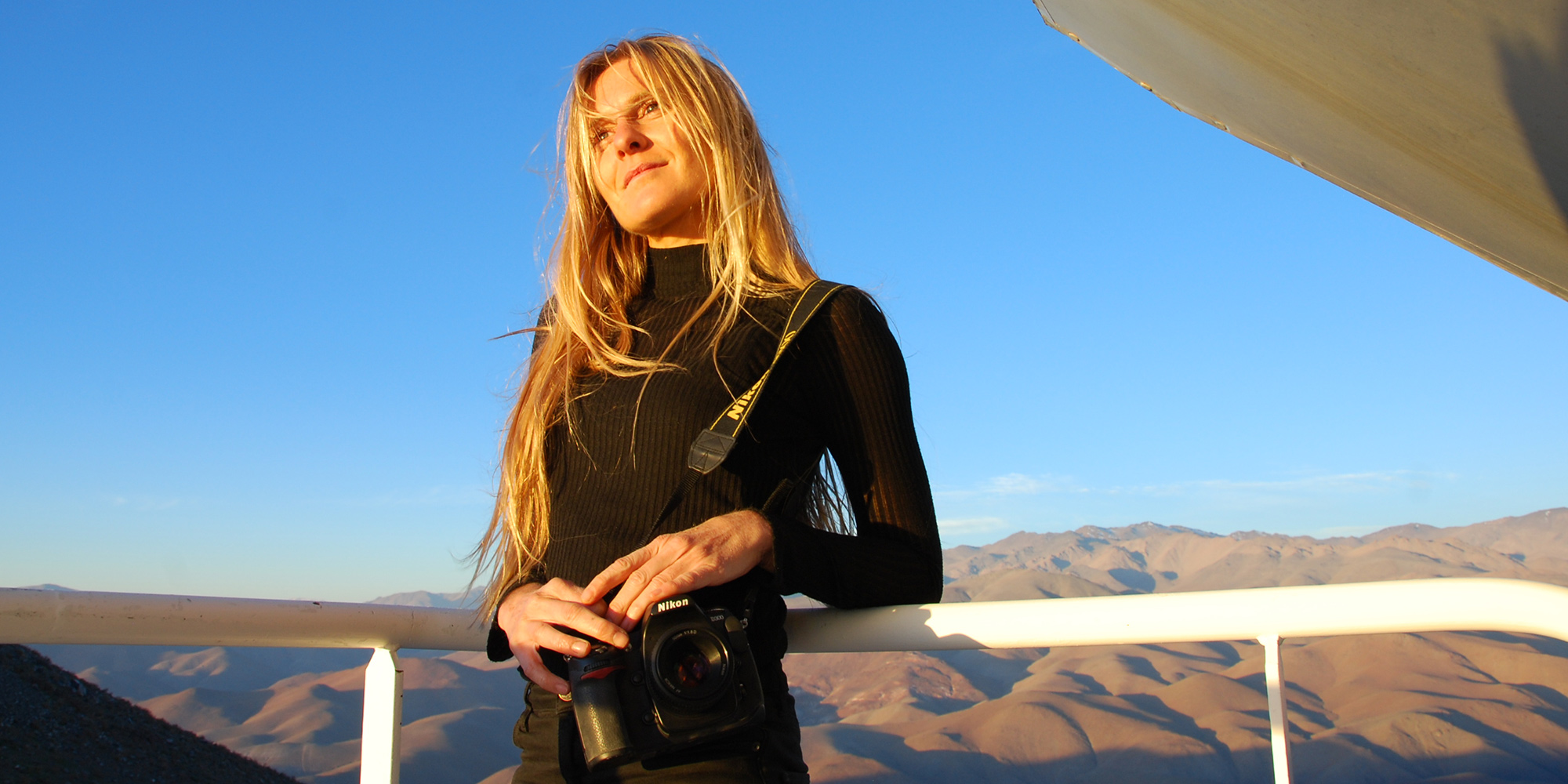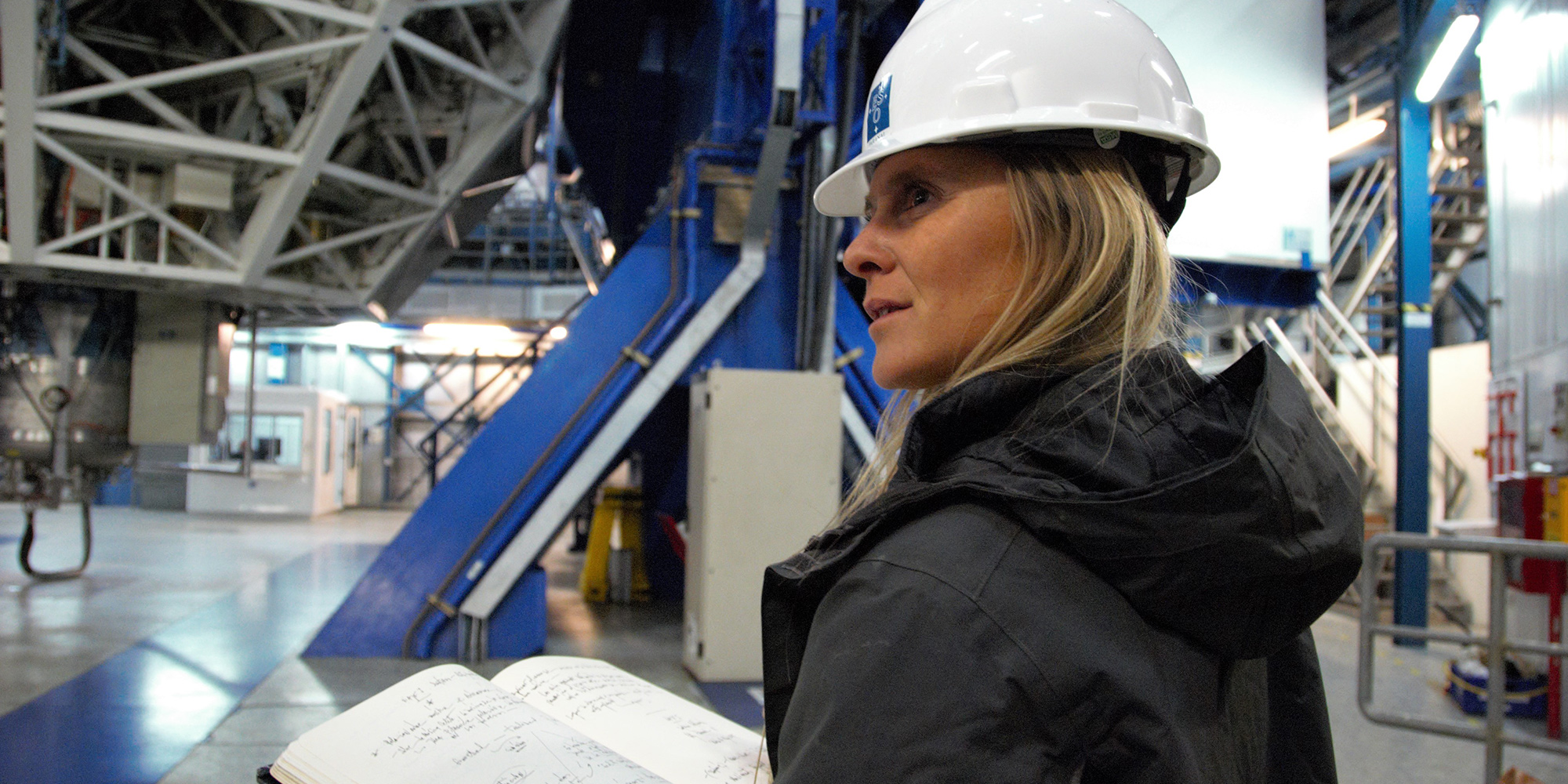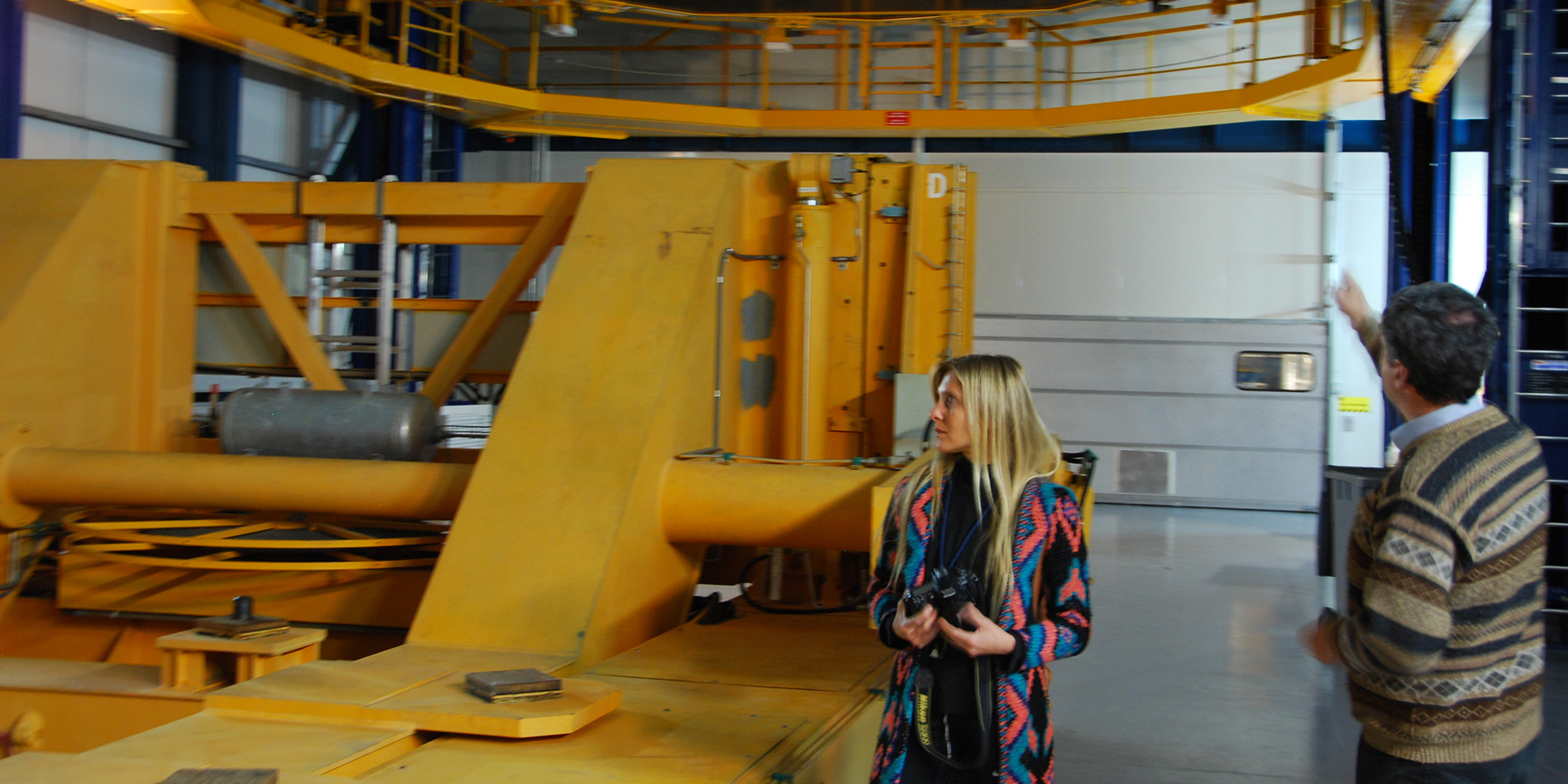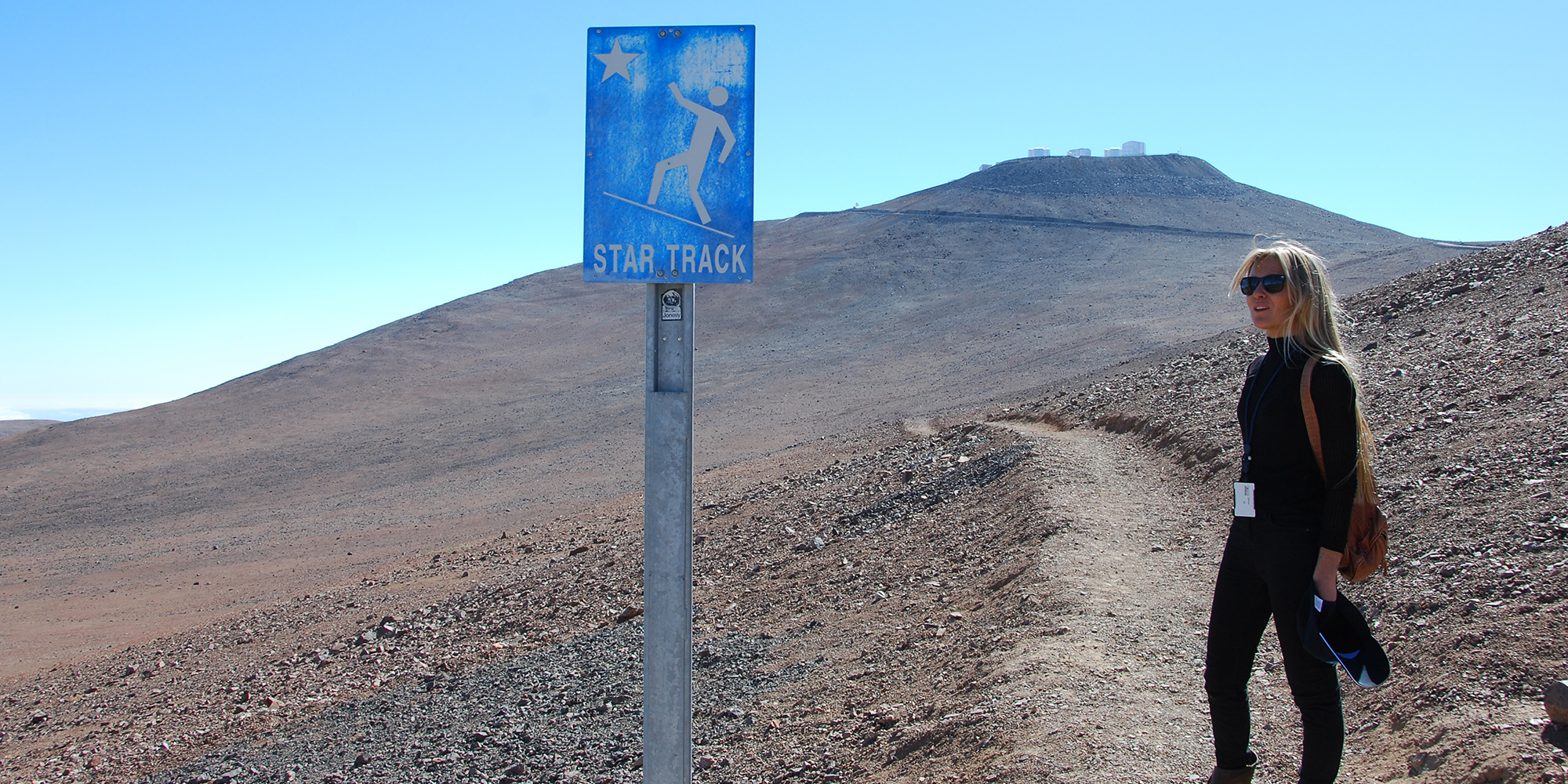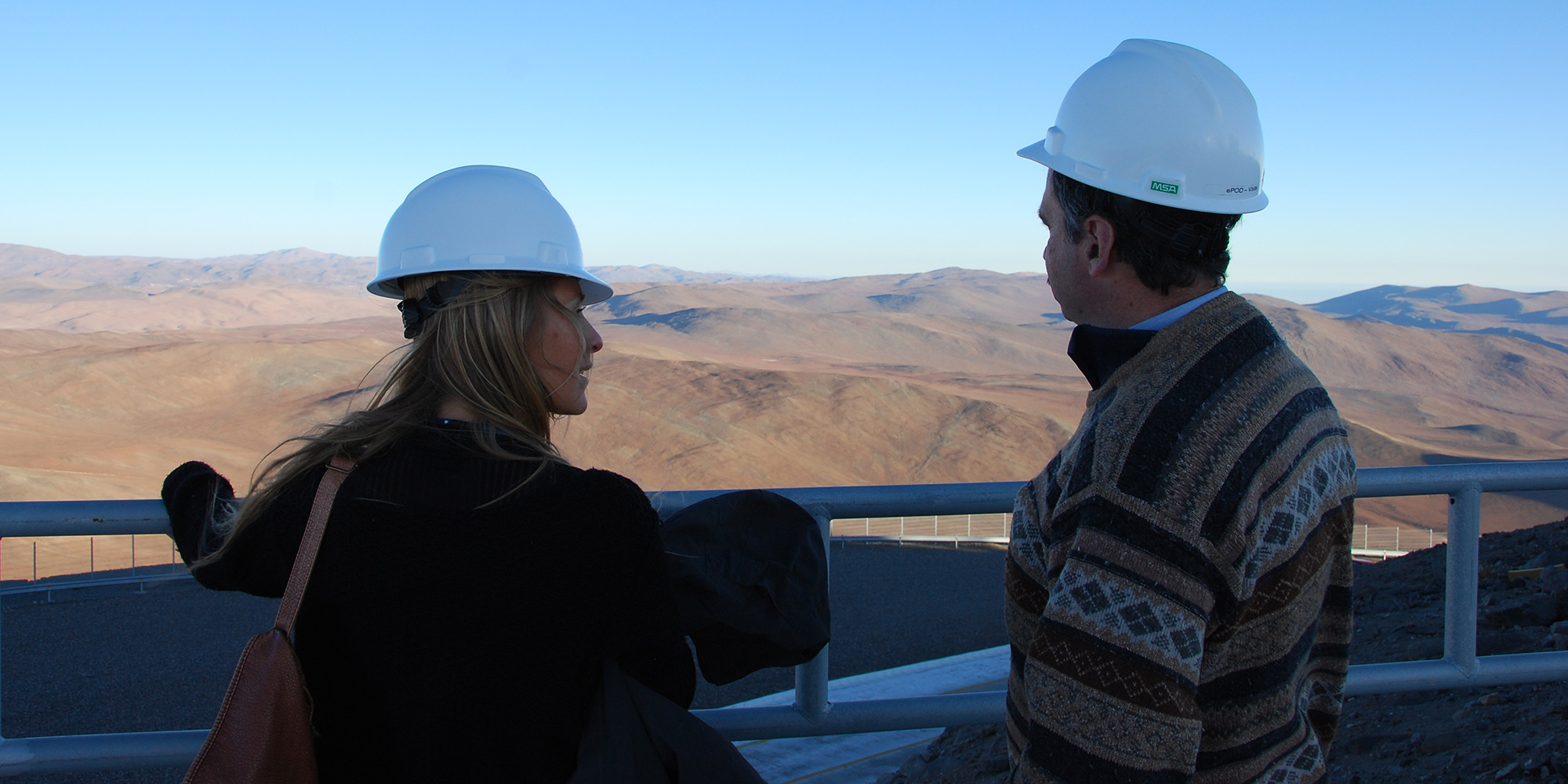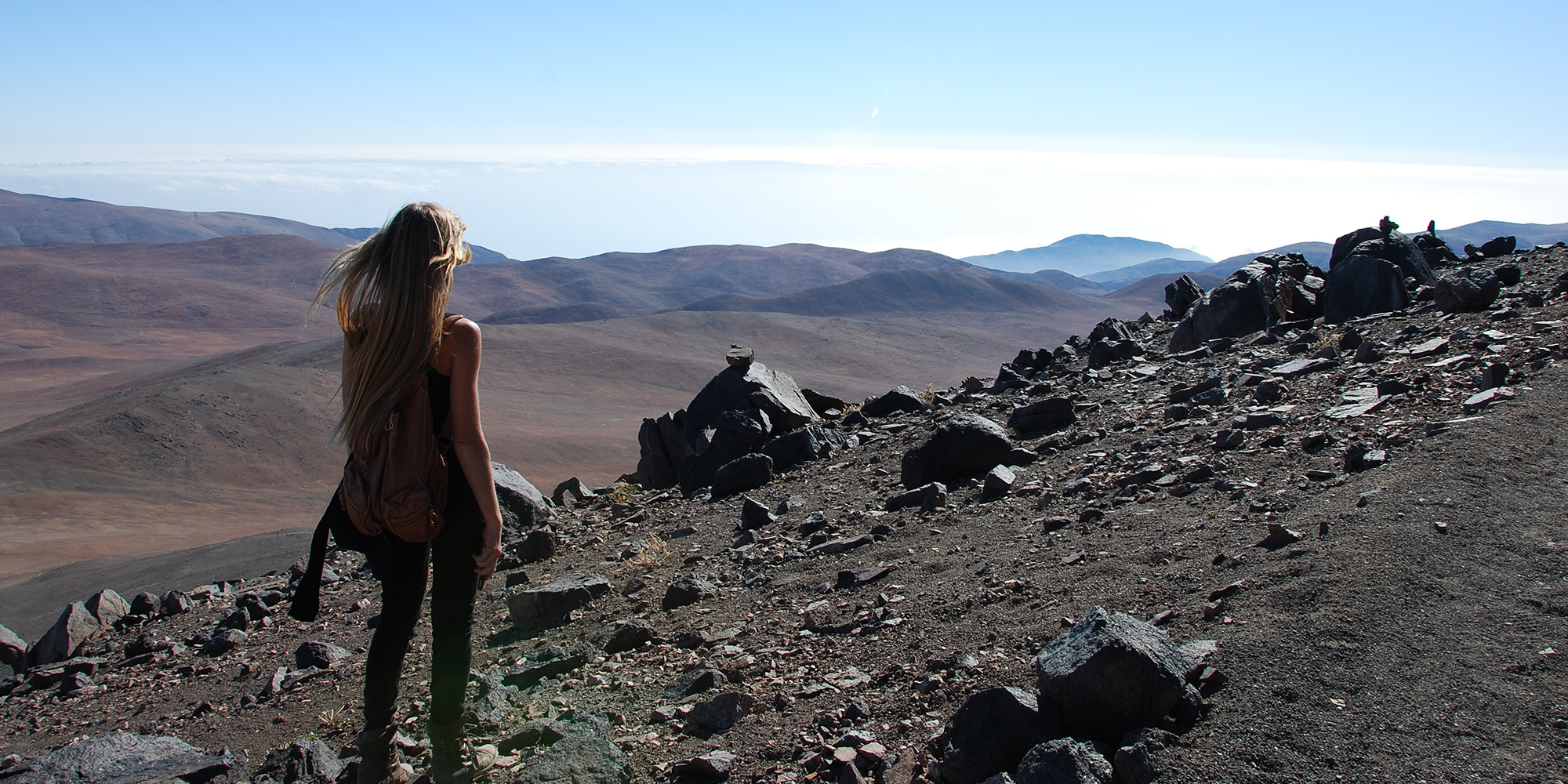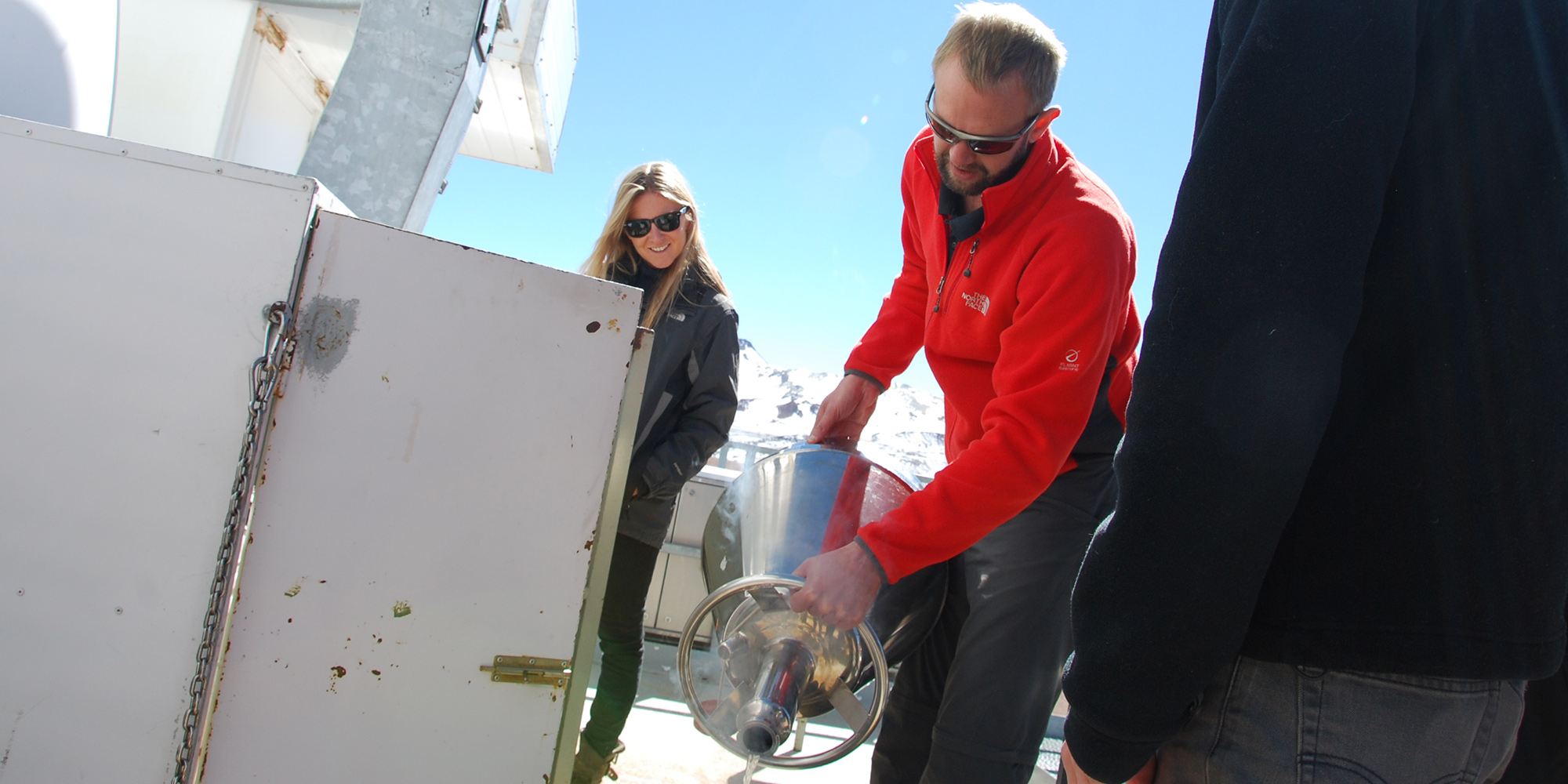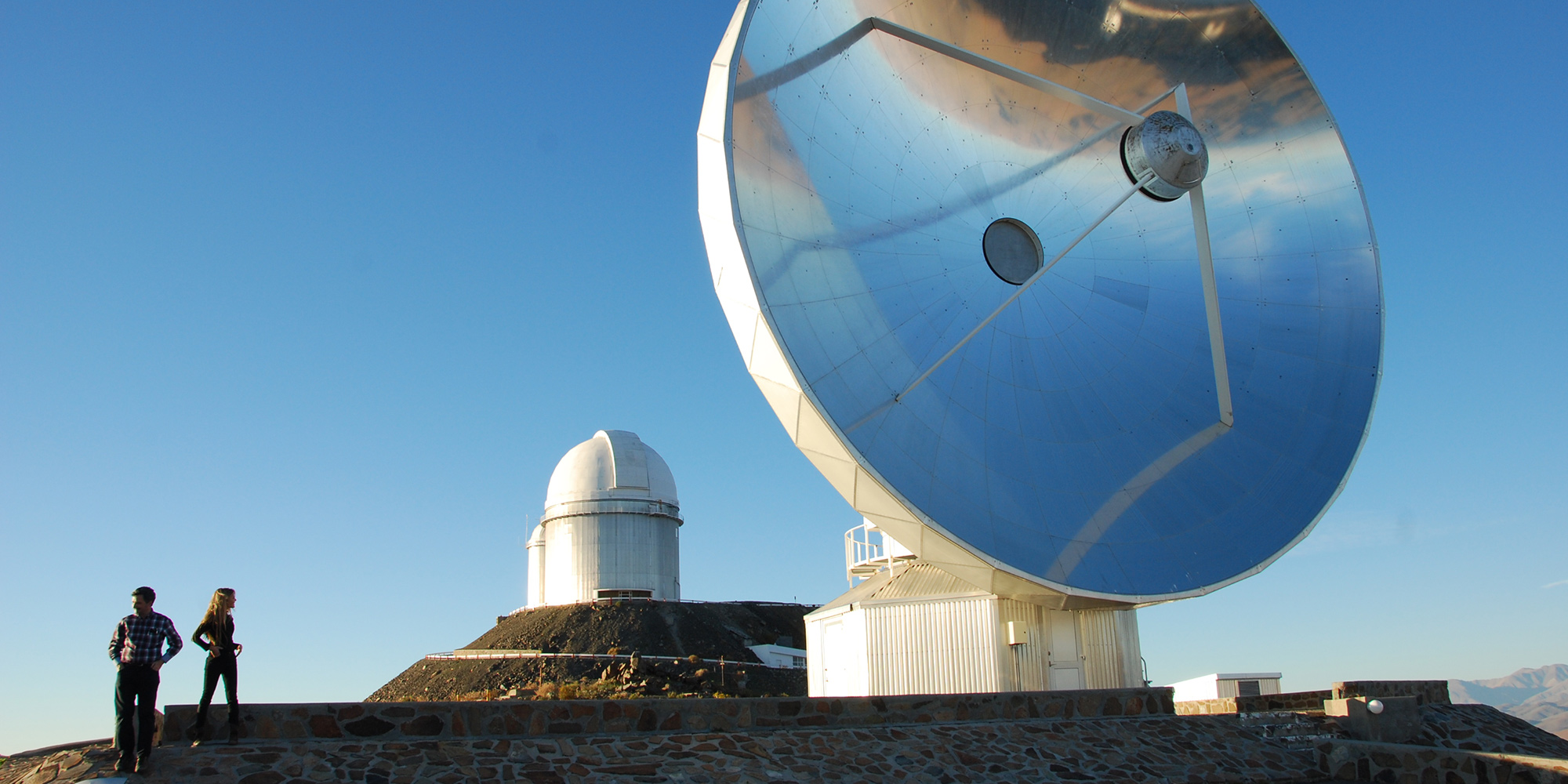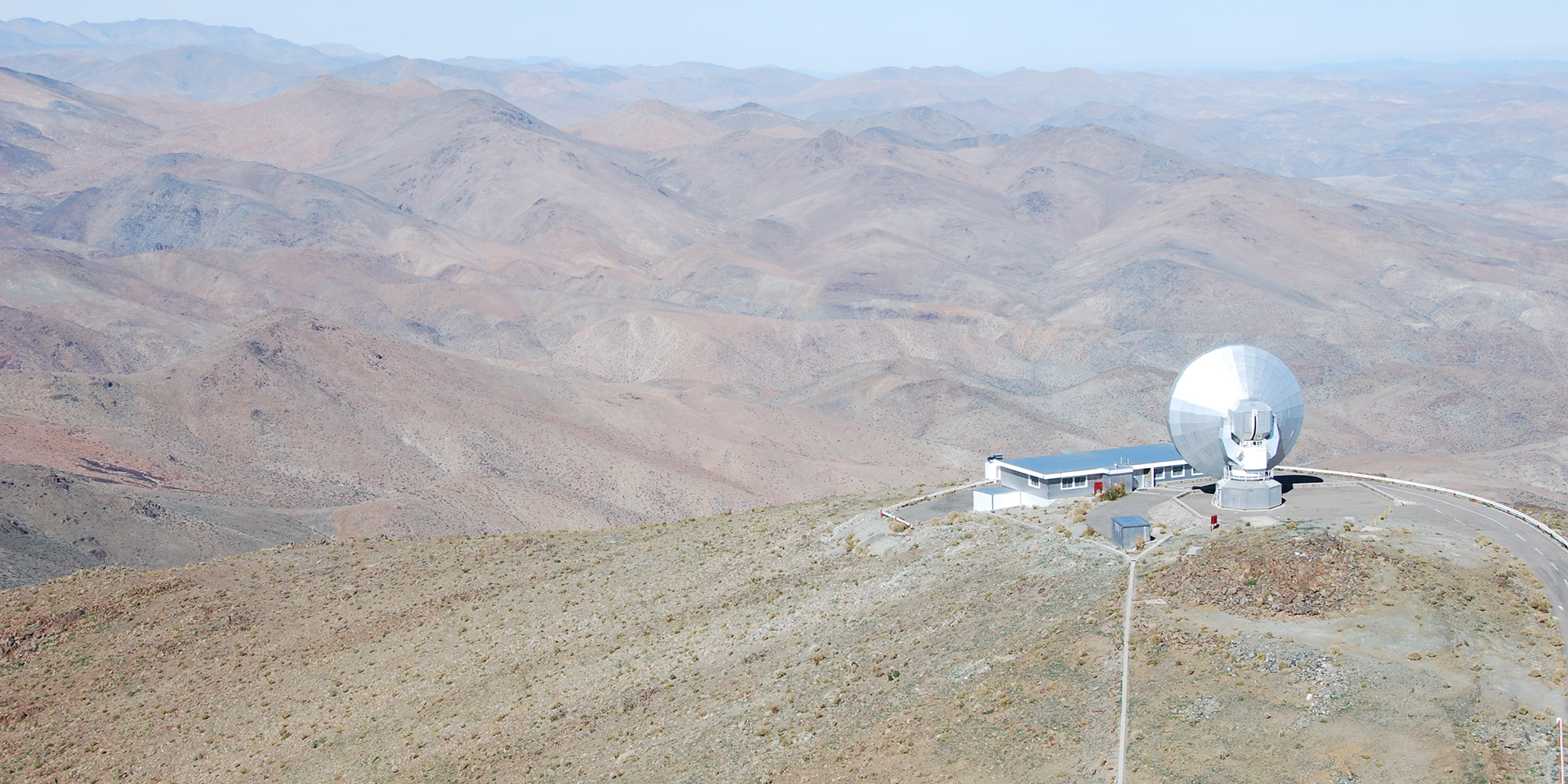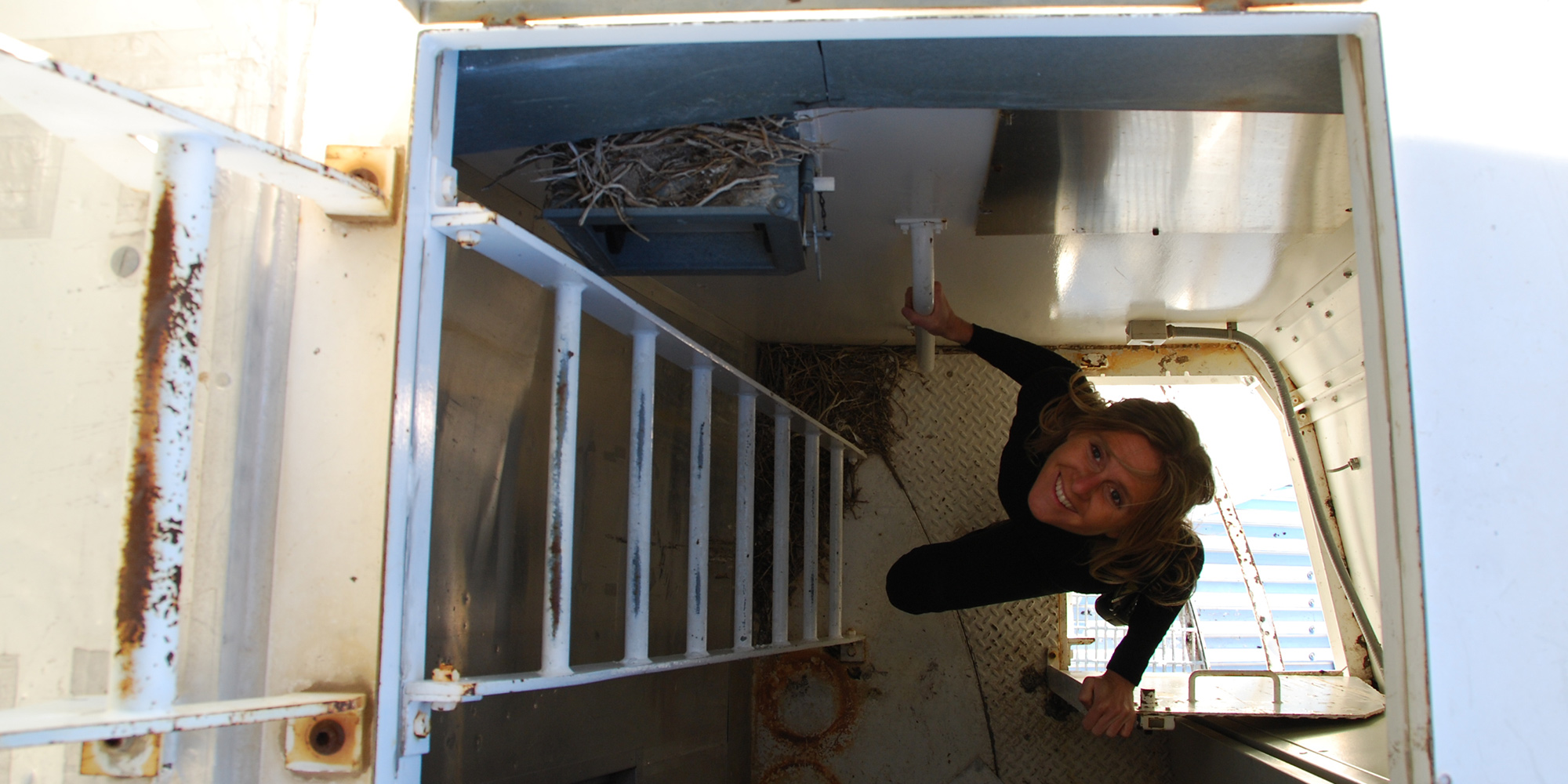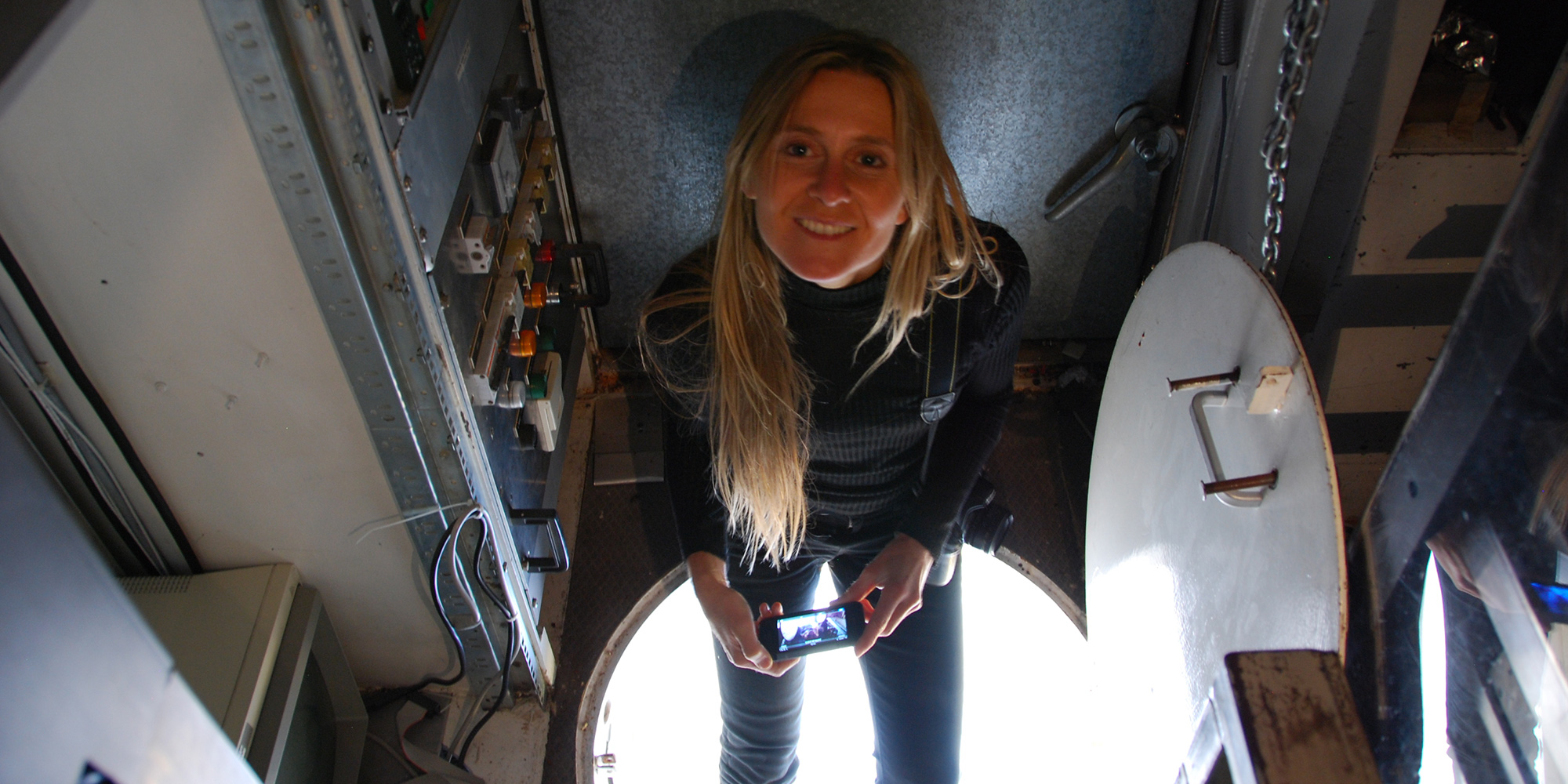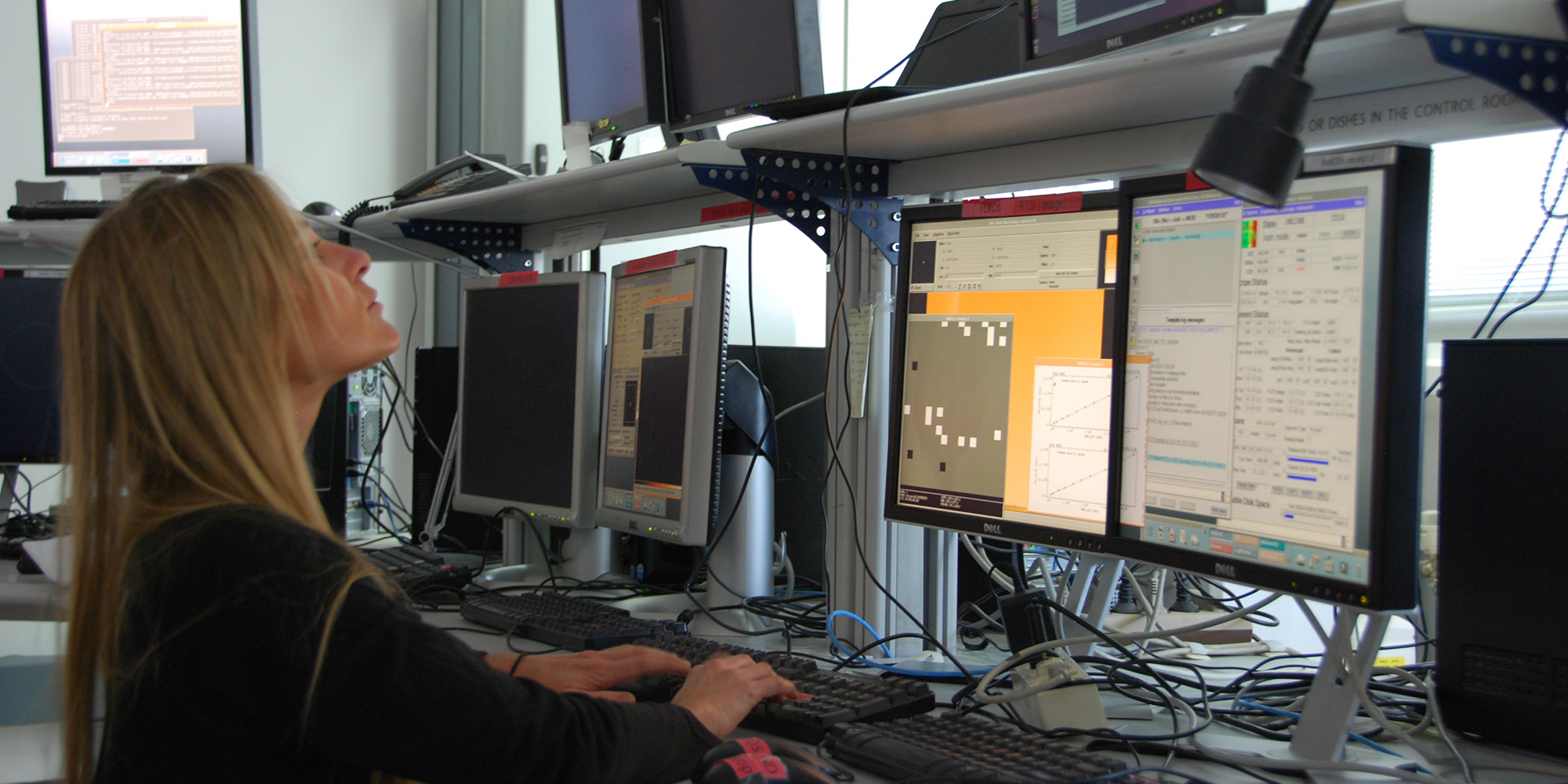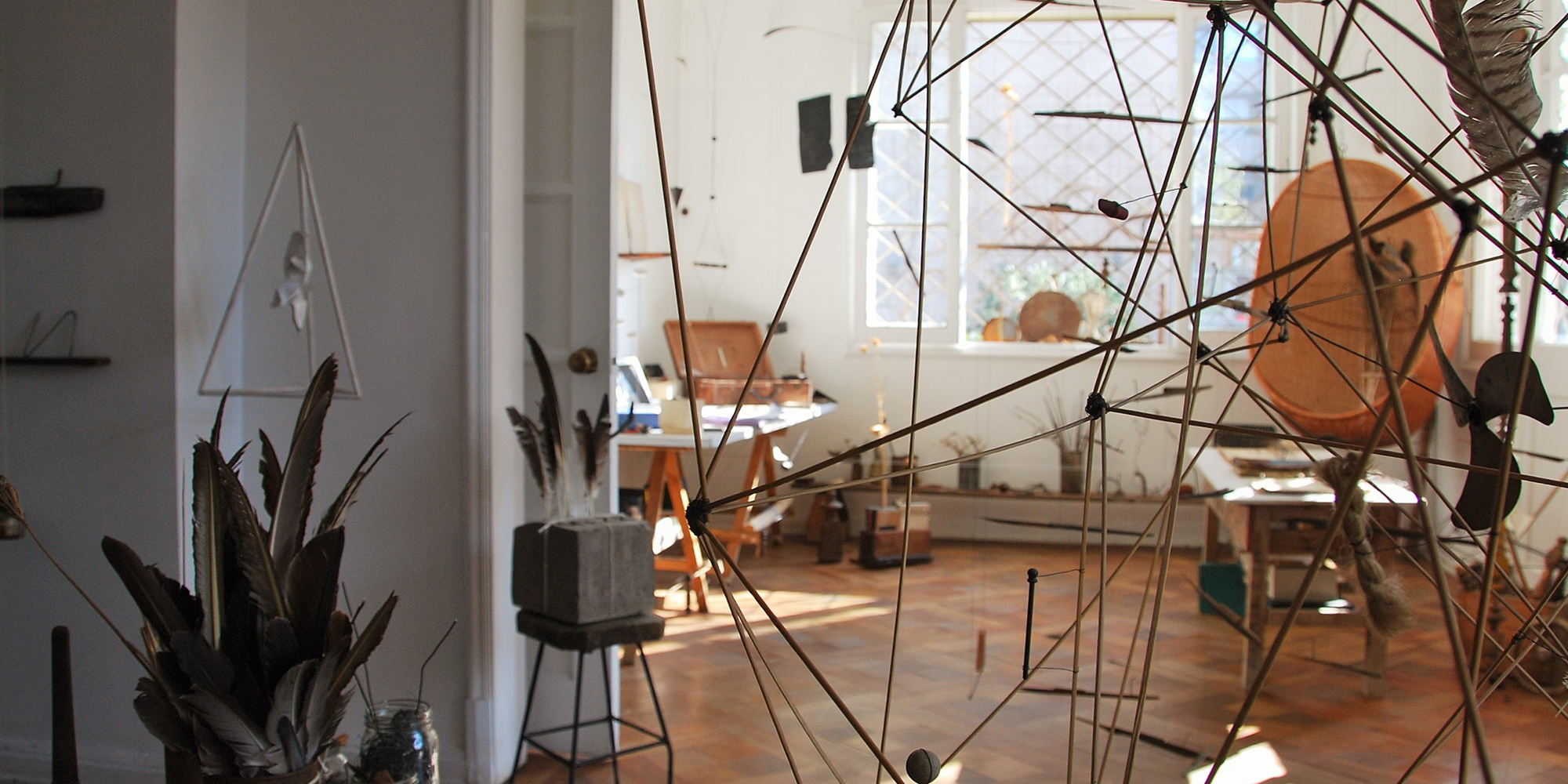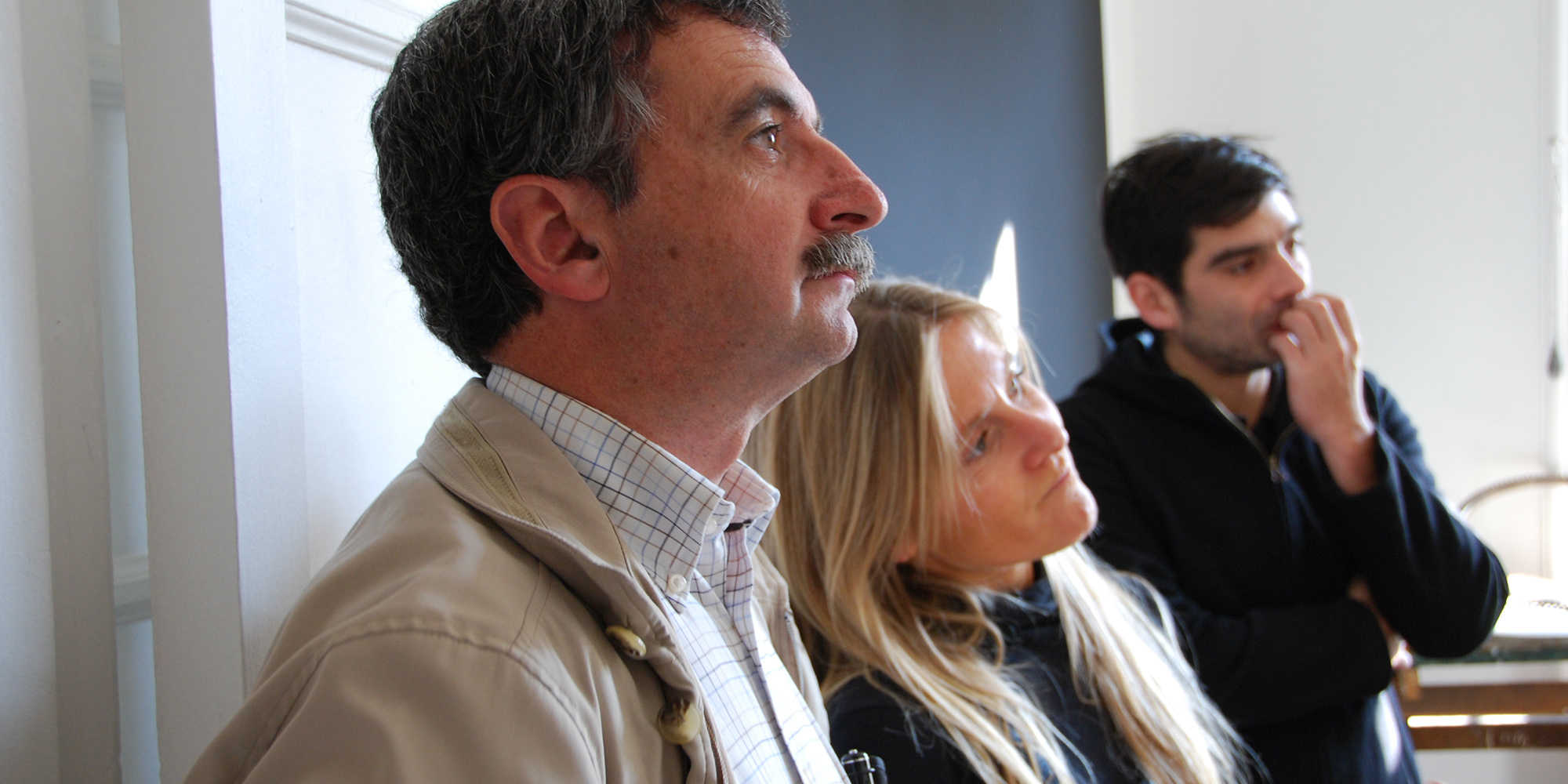María Ignacia Edwards is the recipient of an extraordinary opportunity under the aegis of Art & Science: a residency at the European Southern Observatory (ESO) in Chile and at the Ars Electronica Futurelab in Linz. We accompanied her on her pre-visit in Chile.
Photos: Claudia Schnugg, Text: Claudia Schnugg, Martin Hieslmair / Deutsche Version
In early 2015, more than 140 artists from 40 countries submitted ideas and concepts to the Open Call issued by art & science . They were vying to take advantage of an extraordinary opportunity: a residency for artists at the European Southern Observatory (ESO) in Chile and at the Ars Electronica Futurelab in Austria. Representatives of the member institutions of the art & science Network awarded this residency to María Ignacia Edwards. In May 2015, we accompanied her on her pre-visit in Chile.
María Ignacia Edwards is the first recipient of an Art & Science residency, and the ESO is the first scientific partner of the European Digital Art and Science Network. The aim of art & science is to bring artists together with highly specialized scientists and the Ars Electronica Futurelab’s transdisciplinary staff to create new ways of looking at art and science.
Together with Fernando Comerón, the ESO’s representative in Chile, and Claudia Schnugg, the artist’s mentor at the Ars Electronica Futurelab, María Ignacia Edwards took an inspection tour through Chile in mid-May 2015. The aim of her first journey of inspiration was to reconnoiter potential locations for her residency in Chile and to get to know the scientists and technicians working there as well as the technology behind this huge endeavor.
[one_half]
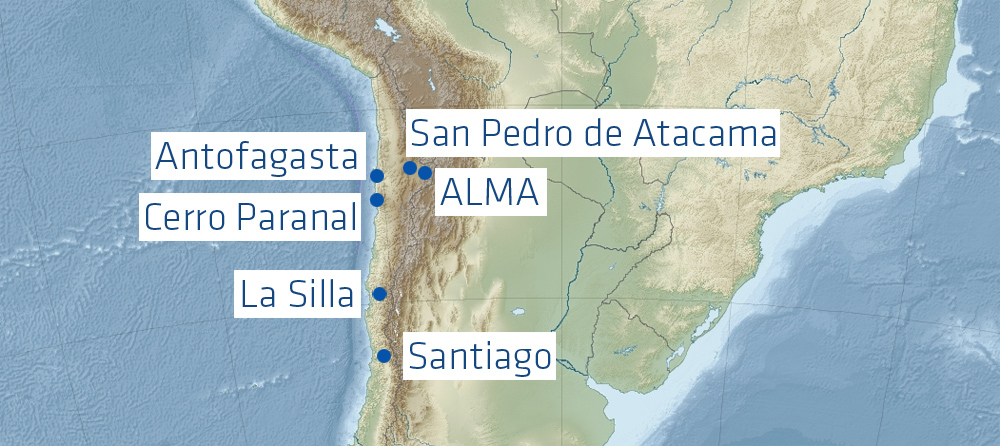
[/one_half]
[one_half_last]
The trio spent several days traveling through this land of contrasts. The point of departure was the capital city, Santiago de Chile, the site of ESO’s headquarters as well as María Ignacia Edwards’ studio. They didn’t spend much time though. They had a long trip ahead of them to Cerro Paranal.
[/one_half_last]
The “big sky country” of the Atacama Desert about a one-hour drive from Antofagasta in northern Chile is the home of the Very Large Telescope (VLT) and an especially wonderful spot from which to peer into outer space. The VLT in Paranal is the world’s most advanced optical instrument. It consists of four unit telescopes with main mirrors 8.2 meters in diameter that can be operated individually or can work together to form a giant interferometer.
[one_third]
[/one_third]
[one_third]
[/one_third]
[one_third_last]
[/one_third_last]
Here, the staff gathers data that’s indispensible to scientific research on the cosmos. Scientists from all over the world gather in Paranal. Each is the lucky recipient of one of the precious positions on the staff of this high-tech data production machine. Garnering “observing time” is no simple matter, but the potential rewards are tremendous. For example, the oldest star in our galaxy, the Milky Way, was identified with the help of the VLT. And it also took the first picture of a planet outside our solar system.
From the telescope’s platform, a small path—the Star Track—leads down to a guest house, the Residencia, where the accommodations are hermetically sealed off from the outside to prevent even the slightest light pollution from spoiling the view of the heavens. Inside, it’s a relaxing oasis for the staff. This extraordinary facility is visited by VIPs and heads of state on a regular basis. Occasionally a film crew stops by—like the team that shot sequences here for the James Bond film “A Quantum of Solace.” The isolation of this spot adds much to its charm.
Meanwhile, María Ignacia Edwards is busy jotting down insights gleaned from initial interviews, ideas that will shape the development of her project. The group does some brainstorming, limning the possibilities of the residency and planning the next leg of their journey.
[one_third]
[/one_third]
[one_third]
[/one_third]
[one_third_last]
[/one_third_last]
The inner workings of this immense telescope aren’t the only source of fascination and inspiration. There’s also the extraordinary landscape it’s situated in, 2,600 meters above sea level. And the VLT isn’t working this street alone. On a nearby peak, the Visible and Infrared Survey Telescope for Astronomy“ (VISTA) is systematically scanning the southern sky in the near-infrared wavelengths. The ESO’s biggest current project is taking place about 20 kilometers away: The European Extremely Large Telescope (E-ELT). Beginning in 2024, scientists here will behold the expanses of the universe through the world’s largest telescope.
[one_half]
[/one_half]
[one_half_last]
[/one_half_last]
From Paranal, the trip continues through the Atacama Desert and up to 3,000 meters above sea level for an overnight stay in San Pedro de Atacama, where the ESO has set up another telescope in cooperation with the Max Planck Institute for Radio Astronomy and the Onsala Space Observatory. Thomas Klein, station manager of the Atacama Pathfinder Experiments (APEX), and expert Felippe Mac Auliffe brief María Ignacia Edwards on their mission.
[one_half]
[/one_half]
[one_half_last]
[/one_half_last]
The next stop on the group’s itinerary was truly a high-altitude highpoint: ALMA, the Atacama Large Millimeter/submillimeter Array. At 5,000 meters above sea level, the world’s largest radio-telescope has 66 antennas spread out across this arid expanse to scan the sky in all directions.
How is a star born? What does it look like when a planet takes shape? These are the questions that scientists on the staff of this huge project are attempting to answer – including Pierre Cox, head of ALMA.
But every one of these questions also refers back to one central matter: that of our origins.
Mará Ignacia Edwards:
“ALMA inspires me: There is the power of the desert, the sun and the illusion of understanding and witnessing the mechanism in action with all those antennas moving at once… The harmony in the accuracy of the movement, which is one of the essential elements that inspire my work.”
Claudia Schnugg, mentor at the Ars Electronica Futurelab:
„ALMA is impressive. We were lucky to have been there when the antennas were arrayed in a tight configuration so we could see all of them at once. At the entrance, the checkpoint resembles that of a high-security prison, but inside everything is so nice and friendly. Plus, it’s fascinating to witness the smooth functioning of the collaboration among these major international organizations. ALMA is also doing an excellent job providing training to and cooperating with the local indigenous population. A great initiative!“
The group scheduled a brief layover in Santiago—important, above all, as a chance for the artist to process the flood of recent impressions. Then it was time to hit the road again, northbound. Our next destination was La Silla, site of the first observatory the ESO built in the 1960s. This facility includes several telescopes, which are operated by the ESO as well as other institutions. The chief astronomer Ivo Saviane welcomed the trio.
Observing the sunset from this vantage point, María Ignacia Edwards was visibly moved:
“The visit to La Silla was overwhelming, I found a place that seems suspended in time and over the clouds, with the beauty and the weight of past time on things, it touched me deeply. I could feel a nostalgia and melancholy for what it used to be and that somehow still is, moving at its own time and rhythm. A place apparently full of stories.”
Claudia Schnugg, mentor at the Ars Electronica Futurelab:
“Everyone we had met prior to our visit spoke of La Silla in rapturous terms. And I understand that completely. After all, its long history has endowed this place with strong emotions. They’ll soon be celebrating their 50th anniversary, so it has also played the biggest part in people’s personal lives. Here, the human level is powerfully present, even though a lot of infrastructure has been decommissioned, replaced or reorganized.”
There’s SEST, the NTT with SOFI and SUSI2, the 2.2m, the ESO 3.6m with its HARPS, and so forth. Behind each one of these abbreviations and acronyms are scientific objectives and the restless urge that drives researchers to endeavor to learn what’s actually going on out there. And this effort is powered by technologies—for instance, those that enable scientists to locate planets beyond our solar system.
[one_third]
[/one_third]
[one_third]
[/one_third]
[one_third_last]
[/one_third_last]
Taking leave of the exploratory array, we head back to Santiago and María Ignacia Edwards’ studio. Now she also has an opportunity to present some of her previous work and the physical setting in which, over the coming months, she’ll dedicate her creative energies to her residency project. The first mindmaps and ideas are already evident.
Now, it’s up to María Ignacia Edwards to decide on the location at which she’ll spend Part 1 of her residency. In any case, she’ll be devoting the coming months to bringing art and science a bit closer together. Following her residency at one of ESO’s facilities in Chile, she’ll travel to Linz for Part 2 at the Ars Electronica Futurelab.
[one_third]
[/one_third]
[one_third]
[/one_third]
[one_third_last]
[/one_third_last]
The results of this first Art & Science residency will be on display September 3-7, 2015 at the Ars Electronica Festival 2015 in Linz. They’ll also make up a modular traveling exhibition that will grace the premises of the European Digital Art and Science Network’s member institutions. Until then, we’re very much looking forward to seeing how this trip plays out.
[one_half]
[/one_half]
[one_half_last]
[/one_half_last]
For details about Art & Science, go to ars.electronica.art/artandscience. This site also provides info about the Open Calls that Ars Electronica conducts jointly with scientific institutions such as ESO and CERN.

